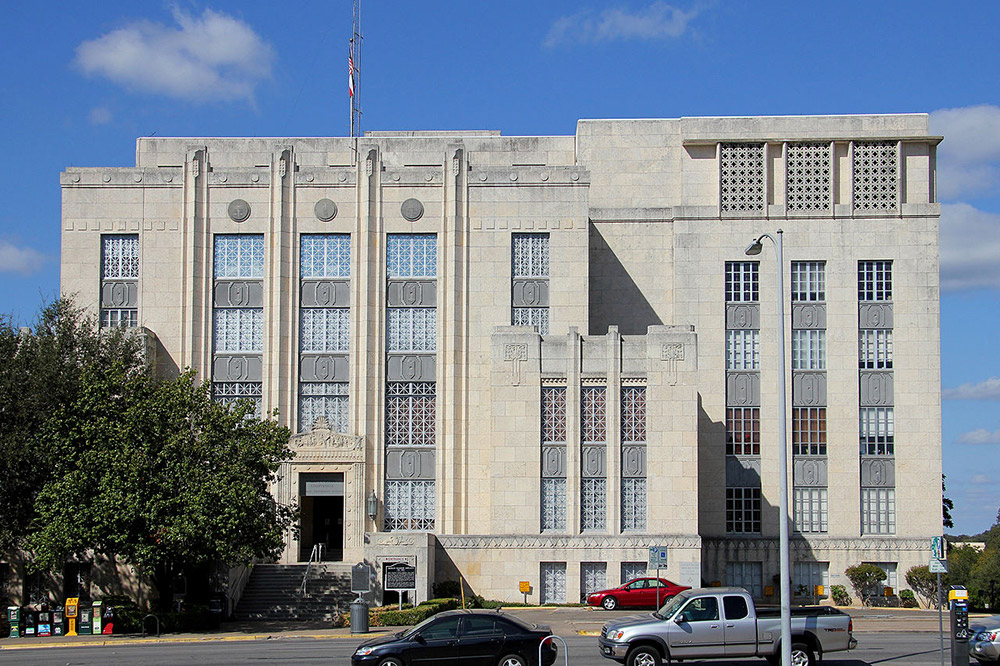Travis County Property Tax

If you’re investing in property in Travis County, Texas, it’s important to understand the county’s property taxes. There are steps you can take during the year that may help reduce your property tax burden. Here are a few things to help homeowners and investors learn more about property taxes in Travis County.
6 Things Investors and Homeowners Need to Know About Travis County Property Taxes
- How Travis County Property Tax Is Calculated
- When to Protest Your Appraised Value
- Property Tax Rates
- When Property Taxes Are Due
- How to Pay Property Taxes
- Ways to Lower Tax Liability
Travis County is a large, vaguely heart-shaped county located in central Texas. With a population of 1,248,743 in 2018, Travis County is the fifth-largest county in Texas, following Harris, Dallas, Tarrant, and Bexar counties. The total area of Travis County covers 1023 square miles and 21 cities, including the City of Austin, the state’s capital. The City of Austin alone had a population of 910,768 in 2018.
Property in Travis County has a large total appraisal roll of $245 billion, of which $189 billion is taxable for property taxes. This county has 129 taxing agencies for schools, hospitals, roads, Municipal Utility Districts (MUDs), and more. There are 15 school districts in this county, including the Austin Independent School District (ISD). Of the $4.4 billion tax levy for 2018, almost 57% was distributed to school districts.
How Travis County Property Tax Is Calculated
Property taxes in Travis County Texas are calculated like other counties across Texas. State law regulates how property tax is handled, but there is no state-level property tax. Instead, local governments and taxing authorities are tasked with managing property taxes. A taxing authority oversees a district that covers a defined area within the county. There can be many taxing units with overlapping districts, so any single parcel of land is usually subject to multiple taxing jurisdictions. The number of taxing units, their tax rates, and the property values are what determine the property taxes for any real property (such as real estate) in Texas. Investors and residents of Travis County can check a parcel of land to see which taxing units charge taxes. This information can also be found at the County Assessor’s Office or on the property tax bill, which is usually mailed to property owners in the fall.
To calculate property taxes in Travis County, property value must first be assessed by the county. The tax is based on the taxable value of the property, which is the assessed value minus any deductions or exemptions. Each county has a central authority that is responsible for appraising the value of property. The Travis County Central Appraisal District (CAD) appraises the value of property and forwards this list to the taxing units, who determine their individual tax rates based on this information. Taxpayers have an opportunity to protest any increases in appraised value. However, this window of opportunity is very short and the processes to prove an unfair increase in taxation can be complex. You may want to consult with a professional tax lawyer with experience in this area.
When to Protest Your Appraised Value
Those living in Travis County may notice a much larger tax bill due to recent changes to tax law in Texas. Future budget growth is being restricted, which was intended, in part, to relieve the property tax burden of taxpayers. To combat this budget threat, Travis County and county commissioners decided to seek the maximum revenue and tax increases allowed by law before the changes take effect. The result is higher tax bills from both increased taxable values and increased tax rates. The amount of increase depends on where each property is located.
Texans living in Travis County have the right fair and equal property tax treatment. You may be able to protest the increased value of your property. Protests are handled by an Appraisal Review Board (ARB) appointed in each county. You can contact the ARB and attempt to protest the increased property value on your own, but you may have more success with the help of an experienced tax professional.

Property Tax Rates
Property taxes are just some of the real estate taxes you may have to pay. Property tax in Travis County is calculated by taking the taxable value of property from the annual appraisal roll and considering the tax rates set by the taxing authorities. Some taxing units may apply a flat rate rather than a variable rate. A taxing agency can be a local government organization that provides a public benefit, such as emergency services, schools, colleges, road repair, water control, police, and more. Each year, these taxing units and local governments determine budget requirements and appraised property values to determine the proposed tax rates. A tax increase can be expected due to rapid growth in many areas across Texas, due to the increased demand for public services. Property taxes are the main source of income for many taxing agencies. This is in part due to the fact that there is no income tax in Texas.
When Property Taxes Are Due
Travis County Central Appraisal District (CAD) starts by appraising the value of homes at the fair market value in January. The owner on record as of January 1st is responsible for paying the property taxes, even if they do not receive a bill. When ownership changes hands, it can create confusion over who is responsible for which taxes. A tax professional can help prevent this from happening. It is possible to receive a supplemental tax bill for a variety of reasons. If you use a mortgage company and they agree to make property tax payments on your behalf, be sure to find out how they manage supplemental tax bills. You may be responsible for those and missing a tax bill can result in penalties, interest, and even lawyer or court fees in some cases.
The appraisal district provides notice of appraised values and provides taxpayers a window of time to protest any changes if needed. An Appraisal Review Board (ARB) starts hearing protests and adjusting appraised values in May. The final values are sent to all the taxing units, which publish tax rates leading up to any necessary votes in September. By October, taxing units start sending tax bills. Most taxing units in Texas contract with a third-party to handle collections. Many use a County Assessor-Collector, who sends out a unified tax bill to residents, handles collections, and allocates funding to individual agencies. Taxes are due when the tax bill is received in October, but taxpayers have until the end of January to pay. By February, penalties and interest start accruing. The county places a lien on each property when they are assessed, which means the failure to pay property taxes can result in the seizure of property. Tax liabilities can quickly become unmanageable, but there are options if you act quickly enough and receive the right information from credible sources. Consider consulting with a tax attorney to find out the best scenario for your situation so you can make the best choices.
How to Pay Property Taxes
There are a variety of ways to pay property taxes. The most convenient way is to make a payment online. Travis County allows online payments using eCheck using your bank account and routing information. You can also use a credit or debit card, though you may be charged a small processing fee. PayPal users can also make online payments for property taxes. You may pay by phone using credit cards or bank information.
A taxpayer only needs to have the last name, street number, or account number to look up bill online. By visiting a Travis County tax office, taxpayers can make payments, as well as find out more about their property taxes. Each year, local governments have planned to increase the tax burden to fund growth in public services. This burden has grown significantly, which spurned the passing of legislation to limit increases.
Ways to Lower Tax Liability
There are many ways to lower your tax liability. Federal and state laws allow for some property to be exempt from property taxes, such as a non-profit organization or historical site. Certain businesses that are only in Texas temporarily may also qualify for exemption. Those who invest in real estate can also benefit from setting up an LLC to protect their business and personal assets.
The Central Appraisal District (CAD) determines the taxable value of property by applying any exemptions to the assessed value of all property. Homeowners that meet certain conditions can apply for a homestead exemption, which significantly lowers the taxable value of their property. This exemption does not kick in until the second year it is in effect. There are also exemptions for a variety of other reasons. Those who are disabled, including 100% disabled veterans, can apply for exemptions, as well. Those who are age 65 and older can also take advantage of many great ways to lower your tax liability.

How Does Travis County Compare to Other Cities in Texas and in the United States?
Travis County is the fifth largest county in Texas and boasts a market value of $245 billion. To compare, the market value of Harris County is $574 billion, while the market value of Dallas County is $292 billion. The property tax burden of any given property in Texas depends on the number of taxing units it is subject to and the accepted tax rates for a given year. Texas does not apply an income tax or statewide property tax. There is also a lower capital gain impact in Texas when selling homes, which has encouraged the housing market in many areas. In contrast, other states with high property taxes may also have high income and other taxes. Some states also apply hefty taxes on home sales, which may discourage investors from flipping houses.
Travis County Property Taxes
Travis County Texas is located in central Texas and boasts the state capital of Austin. There is no state-level income or property tax in Texas, so local governments depend on property taxes for tax revenue. There are almost 439,748 properties in Travis County that are assessed for value each year.
The Travis County Central Appraisal District (CAD) oversees the assessment of property value and applies exemptions when applicable. This is the first chance taxpayers have to lower their tax burden. You can apply for exemptions and also protest the appraised value in front of the Appraisal Review Board (ARB). Once the total taxable values are established in an appraisal roll, it is forwarded to taxing agencies, such as schools, hospitals, and utility districts, which use this information to determine their annual budget. Each tax unit establishes a proposed tax rate, which may require voter approval, in some cases. Once the property tax rate is approved, the Tax Assessor-Collector will send out the tax bills. You may see higher tax bills due to recent tax changes in the law. Taxpayers facing a high tax bill have some options available. Some can be pursued now but depending on where you are in the tax year, some will not be available until the following year.
Regardless of where you are in the tax year, you can benefit from the expert advice of a professional tax lawyer. Contact Anderson Advisors today for assistance with your investments and taxes.
3 Steps to Create an Invisible Investor Strategy




